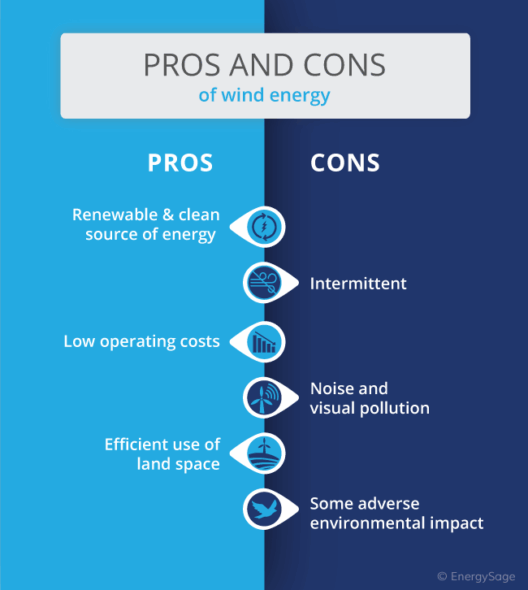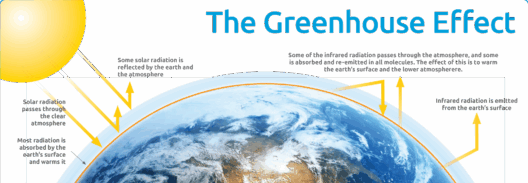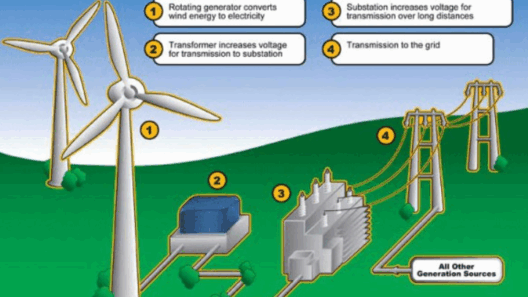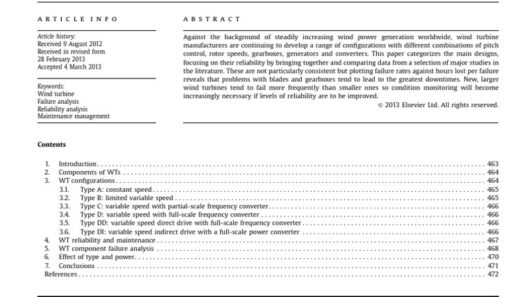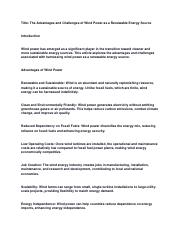Wind energy has emerged as a cornerstone of the renewable energy sector, offering a sustainable alternative to fossil fuels. As the world grapples with the looming threats of climate change and dwindling natural resources, understanding the efficiency of wind energy becomes paramount. But how efficient is wind energy, and what factors dictate its performance? This article delves deep into the mechanics of wind power efficiency, evaluating its role in the contemporary energy landscape.
Before we engage in a detailed exploration, it is crucial to define what we mean by “efficiency” in the context of wind energy. Broadly speaking, efficiency refers to the ratio of useful output to total input, which in the case of wind energy can be articulated as the amount of electrical energy produced relative to the kinetic energy available in wind. This sets the stage for examining various elements that contribute to the efficiency of wind power systems.
The technological advancements in wind turbine design have played a pivotal role in enhancing efficiency. Modern turbines boast improved blade designs that are longer and aerodynamically optimized, allowing them to harness wind energy more effectively. When considering the theoretical maximum efficiency of a wind turbine, we must reference the Betz limit, which posits that no turbine can capture more than 59.3% of the kinetic energy in wind. However, practical efficiencies generally hover around 30% to 45%. This leap from theory to application highlights the ongoing innovations that push efficiency boundaries.
Moreover, the placement and siting of wind farms significantly impact productivity. Factors such as geographic location, elevation, and proximity to infrastructure all play critical roles. For instance, sites with consistent high winds yield better returns on energy generation than less favorable locations. Wind resource assessments involving meteorological data enable developers to strategically select sites that maximize wind capture potential, ultimately enhancing overall efficiency. Notably, off-shore wind farms often capitalize on more robust wind speeds and less turbulent environments, thereby increasing energy outputs considerably.
The operational dynamics of wind turbines also represent another integral aspect of efficiency. Turbine management systems are increasingly incorporating advanced algorithms and artificial intelligence to optimize energy production. These systems can adjust the pitch of the blades and direction of the turbine in real-time, responding to changing wind conditions. Such innovations lead to improved performance levels and a higher capacity factor—essentially the actual output as a percentage of the potential output if running at full capacity. The higher the capacity factor, the more efficiently a wind turbine operates.
Despite these advancements, there remain challenges that can impede wind energy efficiency. Intermittency is a prominent concern; wind is not always blowing, and this variability can pose significant hurdles for energy reliability. As wind turbines often generate energy during peak hours when demand may not correspond, integrating storage solutions becomes critical. Batteries and other energy storage technologies are necessary to ensure a consistent power supply, bridging gaps caused by fluctuations in wind availability. The development of these technologies is crucial in addressing buyer concerns regarding reliability and stability in energy sourcing.
Moreover, the lifecycle efficiency of wind turbines must not go unexamined. This encompasses everything from the manufacturing process and materials used, to transportation, installation, operation, and eventual decommissioning. While wind energy is cleaner than fossil fuels, the production and maintenance of turbines do produce greenhouse gas emissions and require resources. Scrutinizing these aspects allows stakeholders to identify opportunities for improvements, ensuring that the wind energy industry remains not only efficient but genuinely sustainable.
Another vital consideration in evaluating the efficiency of wind energy is its economic viability. The price of wind-generated electricity has plummeted in recent years, making it one of the most cost-effective sources of new energy generation. Installed costs have dropped due to economies of scale and advancements in technology, leading to lower prices for consumers. However, understanding the total cost of ownership is crucial. Transmission infrastructure and grid integration costs must be quantified for a comprehensive efficiency evaluation. Addressing financing mechanisms and potential incentives can further sway buyers on the feasibility of investing in wind energy.
In conclusion, while wind energy presents an impressive promise of efficiency, the reality is intricately woven into a tapestry of technological advancements, geographical considerations, and economic factors. The conversation around the efficiency of wind energy is not merely about megawatts produced, but how it consistently integrates into the broader energy landscape. Future developments will undoubtedly continue to shape this dynamic field, addressing key buyer concerns about reliability, cost, and sustainability. As society strives toward a new energy paradigm, the quest for maximizing wind energy efficiency remains a critical focal point.
By fostering a clearer understanding of how wind power competes as an efficient renewable energy source, we can pave the way for informed decision-making among consumers, companies, and policymakers alike. Embracing this mindset not only amplifies the environmental benefits of wind energy but also enhances its market viability, propelling society closer to a sustainable future.



